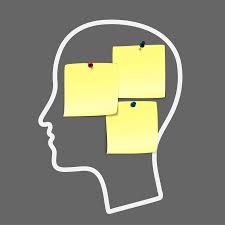- Abuse & The Abuser
- Achievement
- Activity, Fitness & Sport
- Aging & Maturity
- Altruism & Kindness
- Atrocities, Racism & Inequality
- Challenges & Pitfalls
- Choices & Decisions
- Communication Skills
- Crime & Punishment
- Dangerous Situations
- Dealing with Addictions
- Debatable Issues & Moral Questions
- Determination & Achievement
- Diet & Nutrition
- Employment & Career
- Ethical dilemmas
- Experience & Adventure
- Faith, Something to Believe in
- Fears & Phobias
- Friends & Acquaintances
- Habits. Good & Bad
- Honour & Respect
- Human Nature
- Image & Uniqueness
- Immediate Family Relations
- Influence & Negotiation
- Interdependence & Independence
- Life's Big Questions
- Love, Dating & Marriage
- Manners & Etiquette
- Money & Finances
- Moods & Emotions
- Other Beneficial Approaches
- Other Relationships
- Overall health
- Passions & Strengths
- Peace & Forgiveness
- Personal Change
- Personal Development
- Politics & Governance
- Positive & Negative Attitudes
- Rights & Freedom
- Self Harm & Self Sabotage
- Sexual Preferences
- Sexual Relations
- Sins
- Thanks & Gratitude
- The Legacy We Leave
- The Search for Happiness
- Time. Past, present & Future
- Today's World, Projecting Tomorrow
- Truth & Character
- Unattractive Qualities
- Wisdom & Knowledge
Outlooks & Setbacks Saturdays
Nostalgia
My husband is very quickly coming up to his 40th birthday and I’m only 2 years behind him. This milestone birthday of his is making me think about all the years we have already spent together.
It’s giving me a sense of nostalgia - a remembrance of the “good old days.”
The funny thing about those good old days is that they didn’t seem so good at the time, but looking back they hold a wistfulness and a longing for times gone by.
The nostalgia of being newly married with no children - that young and yet-to-be jaded stage of life where you feel like anything is possible.
That’s not to say that my life today is bad - not at all! In fact, I love my life. But age has a way of taking our dreams and aspirations and turning them into something different. Life happens. Hard things happen that we couldn’t dream up if we tried to. And those things can leave us with dashed hopes and dreams, or understanding that life does not turn out the way we often plan.
So as my husband and I come close to our next decade, I’m busy reminiscing about the past and remembering the good times we’ve had.
I hope that as you look back at your life that you are filled with a sense of wistfulness and nostalgia of good days behind you.
Interesting Fact #1
Given how much we seem to forget on a daily basis, it may seem strange but it’s completely true that our brains have an essentially unlimited ‘storage capacity’ for learning. A rough calculation by Paul Reber, Professor of Psychology at Northwestern University suggests that the brain can store 2.5 PETABYTES of data – that’s 2,500,000 Gigabytes, or 300 years worth of TV. The human brain consists of about one billion neurons. Each neuron forms about 1,000 connections to other neurons, amounting to more than a trillion connections. Neurons combine so that each one helps with many memories at a time, exponentially increasing the brain’s memory storage capacity to something closer to around 2.5 petabytes – Professor Paul Reber, Northwestern University
Interesting Fact #2
A large part of the reason we seem to forget so much may well be that, whilst our long term memory is virtually limitless, our short term, or ‘working’ memory has a much, much smaller capacity. The original research into short term memory says we can only remember 5 to 9 pieces of information there at any given time, though more recent experiments suggest it may even be as low as 4! Not convinced? Try it yourself with this quick experiment! Study the list of words below for 2 minutes, then (without looking back at them) write down as many words as you can remember.
Interesting Fact #3
It’s easy to think of the brain as a ‘magical box’ where your thoughts, memories and emotions are kept, but when it comes down to it, the brain is a part of your body just like the heart and your muscles. As such, ‘exercising’ your brain in specific ways – whether that’s learning a new skill such as a musical instrument or a new language, or simply learning new things from a book – produces physical changes in its structure. Thanks to modern imaging techniques such as Magnetic Resonance Imaging (MRI), scientists are actually able to visualise these changes before and after ‘learning’ takes place, and have found not only significant increases in activity (measured by blood flow) in specific areas of the brain associated with those activities, but long-lasting structural changes in terms of white and grey matter. The picture to the left demonstrates these changes in the case of video games, but experiments have shown this in a huge variety of endeavours such as taxi drivers learning new navigation routes and (especially) during childhood.
Quote of the day
“If you tell the truth, you don't have to remember anything.” ― Mark Twain
Article of the day - How Memory Works
Memory is the ongoing process of information retention over time. Because it makes up the very framework through which we make sense of and take action within the present, its importance goes without saying. But how exactly does it work? And how can teachers apply a better understanding of its inner workings to their own teaching? In light of current research in cognitive science, the very, very short answer to these questions is that memory operates according to a "dual-process," where more unconscious, more routine thought processes (known as "System 1") interact with more conscious, more problem-based thought processes (known as "System 2"). At each of these two levels, in turn, there are the processes through which we "get information in" (encoding), how we hold on to it (storage), and and how we "get it back out" (retrieval or recall). With a basic understanding of how these elements of memory work together, teachers can maximize student learning by knowing how much new information to introduce, when to introduce it, and how to sequence assignments that will both reinforce the retention of facts (System 1) and build toward critical, creative thinking (System 2).
Dual-Process Theory
Think back to a time when you learned a new skill, such as driving a car, riding a bicycle, or reading. When you first learned this skill, performing it was an active process in which you analyzed and were acutely aware of every movement you made. Part of this analytical process also meant that you thought carefully about why you were doing what you were doing, to understand how these individual steps fit together as a comprehensive whole. However, as your ability improved, performing the skill stopped being a cognitively-demanding process, instead becoming more intuitive. As you continue to master the skill, you can perform other, at times more intellectually-demanding, tasks simultaneously. Due to your knowledge of this skill or process being unconscious, you could, for example, solve an unrelated complex problem or make an analytical decision while completing it.
In its simplest form, the scenario above is an example of what psychologists call dual-process theory. The term “dual-process” refers to the idea that some behaviors and cognitive processes (such as decision-making) are the products of two distinct cognitive processes, often called System 1 and System 2 (Kaufmann, 2011:443-445). While System 1 is characterized by automatic, unconscious thought, System 2 is characterized by effortful, analytical, intentional thought (Osman, 2004:989).

Figure 1: A summary of System 1 and System 2. (Source: Upfront Analytics, 2015)
Dual-Process Theories and Learning
How do System 1 and System 2 thinking relate to teaching and learning? In an educational context, System 1 is associated with memorization and recall of information, while System 2 describes more analytical or critical thinking. Memory and recall, as a part of System 1 cognition, are focused on in the rest of these notes.
As mentioned above, System 1 is characterized by its fast, unconscious recall of previously-memorized information. Classroom activities that would draw heavily on System 1 include memorized multiplication tables, as well as multiple-choice exam questions that only need exact regurgitation from a source such as a textbook. These kinds of tasks do not require students to actively analyze what is being asked of them beyond reiterating memorized material. System 2 thinking becomes necessary when students are presented with activities and assignments that require them to provide a novel solution to a problem, engage in critical thinking, or apply a concept outside of the domain in which it was originally presented.
It may be tempting to think of learning beyond the primary school level as being all about System 2, all the time. However, it’s important to keep in mind that successful System 2 thinking depends on a lot of System 1 thinking to operate. In other words, critical thinking requires a lot of memorized knowledge and intuitive, automatic judgments to be performed quickly and accurately.
How does Memory Work?
In its simplest form, memory refers to the continued process of information retention over time. It is an integral part of human cognition, since it allows individuals to recall and draw upon past events to frame their understanding of and behavior within the present. Memory also gives individuals a framework through which to make sense of the present and future. As such, memory plays a crucial role in teaching and learning. There are three main processes that characterize how memory works. These processes are encoding, storage, and retrieval (or recall).
- Encoding. Encoding refers to the process through which information is learned. That is, how information is taken in, understood, and altered to better support storage (which you will look at in Section 3.1.2). Information is usually encoded through one (or more) of four methods: (1) Visual encoding (how something looks); (2) acoustic encoding (how something sounds); (3) semantic encoding (what something means); and (4) tactile encoding (how something feels). While information typically enters the memory system through one of these modes, the form in which this information is stored may differ from its original, encoded form (Brown, Roediger, & McDaniel, 2014).
- Storage. Storage refers to how, where, how much, and how long encoded information is retained within the memory system. The modal model of memory (storage) highlights the existence of two types of memory: short-term and long-term memory. Encoded information is first stored in short-term memory and then, if need be, is stored in long-term memory (Roediger & McDermott, 1995). Atkinson and Shiffrin argue that information that is encoded acoustically is primarily stored in short-term memory (STM), and it is only kept there through constant repetition (rehearsal). Time and inattention may cause information stored in STM to be forgotten. This is because short-term memory only lasts between 15 and 30 seconds. Additionally, STM only stores between five and nine items of information, with seven items being the average number. In this context, the term “items” refers to any piece of information. Long-term memory, however, has immense storage capacity, and information stored within LTM can be stored there indefinitely. Information that is encoded semantically is primarily stored in LTM; however, LTM also stores visually- and acoustically-encoded information. Once information is stored within LTM or STM, individuals need to recall or retrieve it to make use of said information (Roediger & McDermott, 1995). It is this retrieval process that often determines how well students perform on assignments designed to test recall.

Figure 2: The differences between STM and LTM. (Adapted from: Roediger & McDermott, 1995)
- Retrieval. As indicated above, retrieval is the process through which individuals access stored information. Due to their differences, information stored in STM and LTM are retrieved differently. While STM is retrieved in the order in which it is stored (for example, a sequential list of numbers), LTM is retrieved through association (for example, remembering where you parked your car by returning to the entrance through which you accessed a shopping mall) (Roediger & McDermott, 1995).
Improving Recall
Retrieval is subject to error, because it can reflect a reconstruction of memory. This reconstruction becomes necessary when stored information is lost over time due to decayed retention. In 1885, Hermann Ebbinghaus conducted an experiment in which he tested how well individuals remembered a list of nonsense syllables over increasingly longer periods of time. Using the results of his experiment, he created what is now known as the “Ebbinghaus Forgetting Curve” (Schaefer, 2015).

Figure 3: The Ebbinghaus Forgetting Curve. (Source: Schaefer, 2015)
Through his research, Ebbinghaus concluded that the rate at which your memory (of recently learned information) decays depends both on the time that has elapsed following your learning experience as well as how strong your memory is. Some degree of memory decay is inevitable, so, as an educator, how do you reduce the scope of this memory loss? The following sections answer this question by looking at how to improve recall within a learning environment, through various teaching and learning techniques.
As a teacher, it is important to be aware of techniques that you can use to promote better retention and recall among your students. Three such techniques are the testing effect, spacing, and interleaving.
- The testing effect. In most traditional educational settings, tests are normally considered to be a method of periodic but infrequent assessment that can help a teacher understand how well their students have learned the material at hand. However, modern research in psychology suggests that frequent, small tests are also one of the best ways to learn in the first place. The testing effect refers to the process of actively and frequently testing memory retention when learning new information. By encouraging students to regularly recall information they have recently learned, you are helping them to retain that information in long-term memory, which they can draw upon at a later stage of the learning experience (Brown, Roediger, & McDaniel, 2014). As secondary benefits, frequent testing allows both the teacher and the student to keep track of what a student has learned about a topic, and what they need to revise for retention purposes. Frequent testing can occur at any point in the learning process. For example, at the end of a lecture or seminar, you could give your students a brief, low-stakes quiz or free-response question asking them to remember what they learned that day, or the day before. This kind of quiz will not just tell you what your students are retaining, but will help them remember more than they would have otherwise.
- Spacing. According to the spacing effect, when a student repeatedly learns and recalls information over a prolonged time span, they are more likely to retain that information. This is compared to learning (and attempting to retain) information in a short time span (for example, studying the day before an exam). As a teacher, you can foster this approach to studying in your students by structuring your learning experiences in the same way. For example, instead of introducing a new topic and its related concepts to students in one go, you can cover the topic in segments over multiple lessons (Brown, Roediger, & McDaniel, 2014).
- Interleaving. The interleaving technique is another teaching and learning approach that was introduced as an alternative to a technique known as “blocking”. Blocking refers to when a student practices one skill or one topic at a time. Interleaving, on the other hand, is when students practice multiple related skills in the same session. This technique has proven to be more successful than the traditional blocking technique in various fields (Brown, Roediger, & McDaniel, 2014).
As useful as it is to know which techniques you can use, as a teacher, to improve student recall of information, it is also crucial for students to be aware of techniques they can use to improve their own recall. This section looks at four of these techniques: state-dependent memory, schemas, chunking, and deliberate practice.
- State-dependent memory. State-dependent memory refers to the idea that being in the same state in which you first learned information enables you to better remember said information. In this instance, “state” refers to an individual’s surroundings, as well as their mental and physical state at the time of learning (Weissenborn & Duka, 2000).
- Schemas. Schemas refer to the mental frameworks an individual creates to help them understand and organize new information. Schemas act as a cognitive “shortcut” in that they allow individuals to interpret new information quicker than when not using schemas. However, schemas may also prevent individuals from learning pertinent information that falls outside the scope of the schema that has been created. It is because of this that students should be encouraged to alter or reanalyze their schemas, when necessary, when they learn important information that may not confirm or align with their existing beliefs and conceptions of a topic.
- Chunking. Chunking is the process of grouping pieces of information together to better facilitate retention. Instead of recalling each piece individually, individuals recall the entire group, and then can retrieve each item from that group more easily (Gobet et al., 2001).
- Deliberate practice. The final technique that students can use to improve recall is deliberate practice. Simply put, deliberate practice refers to the act of deliberately and actively practicing a skill with the intention of improving understanding of and performance in said skill. By encouraging students to practice a skill continually and deliberately (for example, writing a well-structured essay), you will ensure better retention of that skill (Brown et al., 2014).
Question of the day - What is your best memory from your days as a young adult?
Moods & Emotions
What is your best memory from your days as a young adult?










